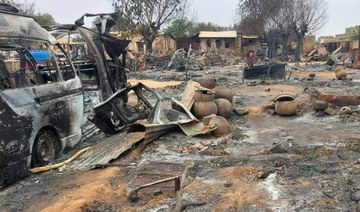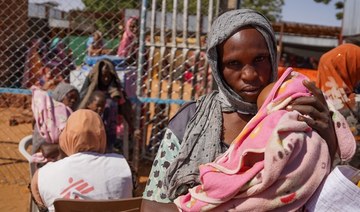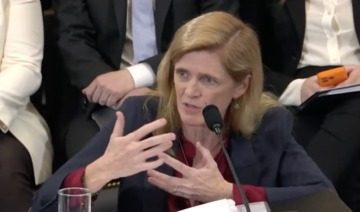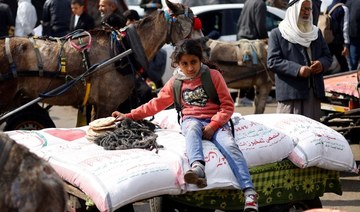ALGIERS: On Feb. 22, 2019, sudden and unprecedented protests swept Algeria. A year on, despite bringing down a president, the “Hirak” protest movement faces mounting challenges.
Massive anti-government protests held every Friday quickly gathered momentum: Six weeks in, President Abdelaziz Bouteflika resigned after 20 years in power.
But Algeria’s military was quick to reassert control and by the time presidential elections were held in December, a former Bouteflika ally succeeded him in a vote deeply opposed by protesters and shunned by most voters.
“With the presidential election, we passed into act two, with all the specter of improbability, uncertainty and instability” that entails, Karima Direche, an historian of contemporary North Africa, told AFP.
“It matches what Algerians have been saying for a year: ‘Everything is moving and nothing is changing.’” While a year of weekly protests has not yet brought down “the system” that they challenged, the Hirak movement has profoundly changed Algeria’s political landscape.
Bouteflika’s resignation and the imprisonment of corrupt businessmen and politicians are “tangible results, even if the main demand of regime change and systemic reform is far from having been achieved,” said Dalia Ghanem, a researcher with the Carnegie Middle East Center in Beirut.
But Hirak’s biggest success, she said, was “the increased awareness of Algerians and their desire to reconnect with politics ... without fear of another civil war.”
A brutal war between the Algerian army and Islamist rebels killed some 200,000 people in the 1990s.
The trauma of the conflict was exploited under Bouteflika to discourage dissent, and until February 22 had rendered large protests on the streets unimaginable.
Ahead of the first protests, Algeria’s political system had remained focused on presidential polls that were widely expected to return Bouteflika to power — despite the 82-year-old being largely incapacitated since a stroke in 2013.
Cut off from the public, the regime sensed growing anger but underestimated it. Young Algerians — disproportionately affected by massive unemployment in a country where the majority is under 30 — were fed up with being represented by a wheelchair-bound octogenarian whose rare public appearances elicited mockery online.
Simmering anger peaked when, during a meeting of the president’s party, a portrait of Bouteflika was addressed by party apparatchiks in the absence of the ailing leader.
Calls to protest on Feb. 22 began multiplying across social media.
Few expected the movement to take hold though, especially in Algiers, where since 2001 public rallies had been banned.
But then on the first Friday, overwhelmed police stood aside as tens of thousands of peaceful demonstrators poured out onto the streets.
In a country without a real opposition party or union, for the first time “the street appeared as a protest force,” said Karima Direche, an historian at the French National Center for Scientific Research.
According to Jean-Pierre Filiu, professor of Middle East studies at Sciences Po University in Paris, the Hirak has for the past year taken center stage in “both the nation’s history and public space.”
And by keeping the protests peaceful, “the movement has changed the rules of the game in Algerian politics, which was previously marked by violence and a lack of transparency.”
The Hirak has also shown the profound transformation of Algerian society: Led by an educated and hyperconnected youth, and in particular women, who are now determined to be heard.
Algeria’s new president, Abdelmadjid Tebboune, aged 74, “will have to deal with that. He won’t be able to rule like those before him,” said Direche.
A year on, the protests are smaller than in spring 2019, but the movement remains strong.
The Hirak wants to influence the changes promised by the new president but is struggling to structure itself and agree on a future strategy.
“As the movement celebrates its first anniversary, I want to ask ‘What’s next?,’” said Ghanem. “What do you want? What are you demanding and how will you obtain concrete results?”
Several civil society groups born of the Hirak movement are to hold a conference in Algiers on Sunday marking the anniversary in a bid to unify their ranks as a political force.
Participants from across Algeria and abroad will examine a “Feb. 22 Proclamation” summing up the demands and slogans of the protest movement, organizers said.
A year on, challenges remain for Algerian protest movement
https://arab.news/98gkv
A year on, challenges remain for Algerian protest movement
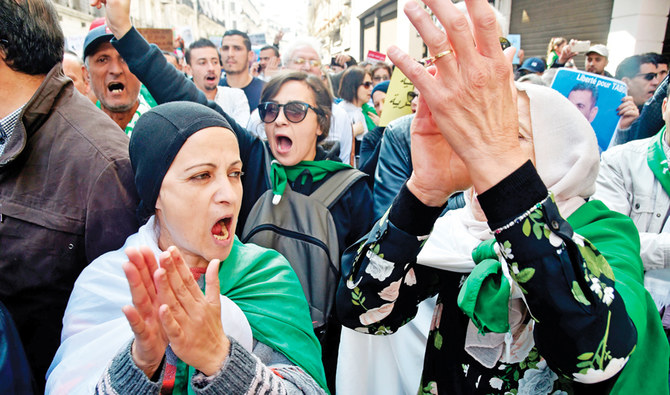
- A year on, the protests are smaller than in spring 2019, but the movement remains strong
UN official warns famine in northern Gaza is already ‘full-blown’
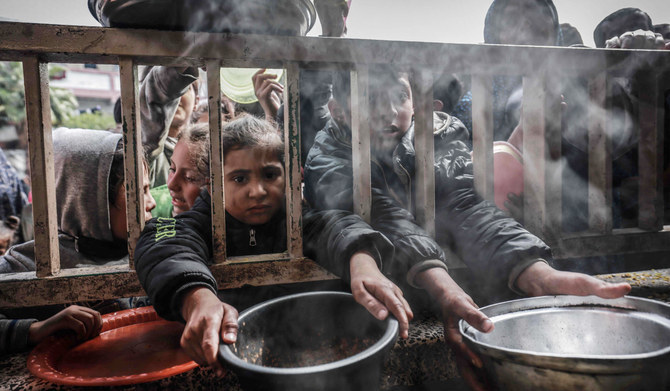
- Israel has killed more than 34,000 Palestinians since Oct. 7 attacks by Hamas
- There was no immediate comment from Israel, which controls entrance into Gaza
WASHINGTON: A top UN official said Friday that hard-hit northern Gaza was now in “full-blown famine” after more than six months of war between Israel and Hamas and severe Israeli restrictions on food deliveries to the Palestinian territory.
Cindy McCain, the American director of the UN World Food Program, became the most prominent international official so far to declare that trapped civilians in the most cut-off part of Gaza had gone over the brink into famine.
“It’s horror,” McCain told NBC’s “Meet the Press” in an interview to air Sunday. “There is famine — full-blown famine — in the north, and it’s moving its way south.”
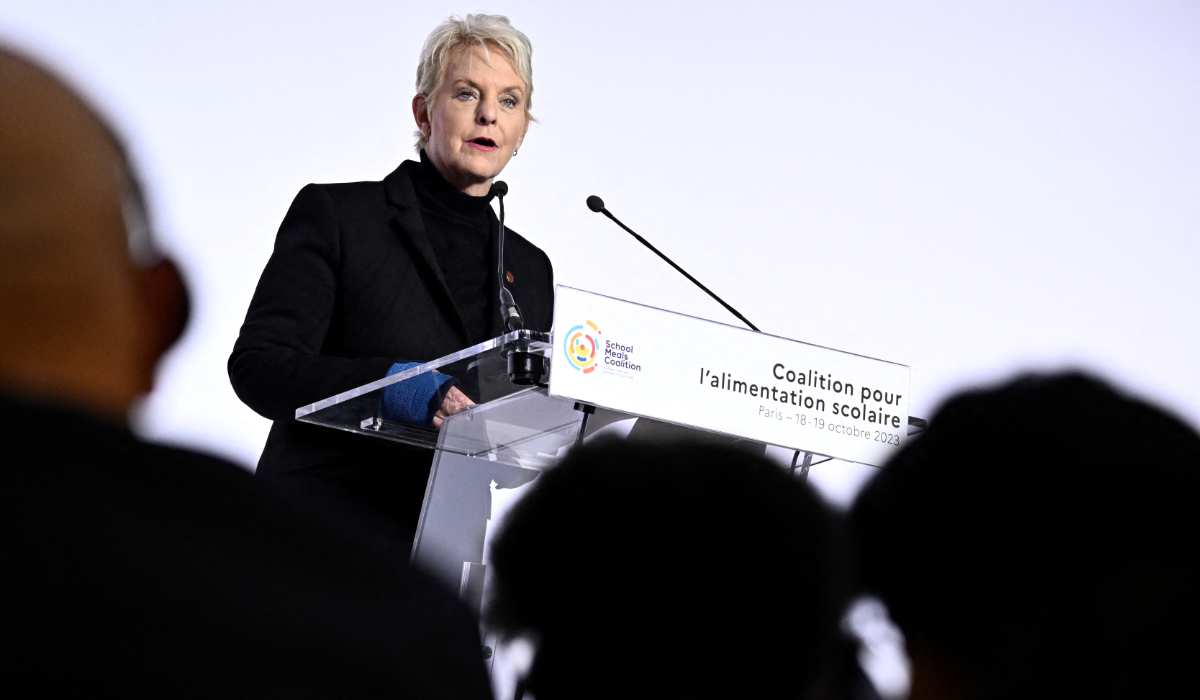
She said a ceasefire and a greatly increased flow of aid through land and sea routes was essential to confronting the growing humanitarian catastrophe in Gaza, home to 2.3 million people.
There was no immediate comment from Israel, which controls entrance into Gaza and says it is beginning to allow in more food and other humanitarian aid through land crossings.
The panel that serves as the internationally recognized monitor for food crises said earlier this year that northern Gaza was on the brink of famine and likely to experience it this month. The next update will not come before this summer.
One of the US Agency for International Development’s humanitarian officials in Gaza told The Associated Press that on-the-ground preparations for a new US-led sea route were on track to bring in more food — including treatment for hundreds of thousands of starving children — by early or mid-May. That’s when the American military expects to finish building a floating pier to receive the shipments.
Ramping up the delivery of aid on the planned US-backed sea route will be gradual as aid groups test the distribution and security arrangements for relief workers, the USAID official said.
The official spoke on condition of anonymity over security concerns for work done in a conflict zone. They were some of the agency’s first comments on the status of preparations for the Biden administration’s $320 million Gaza pier project, for which USAID is helping coordinate on-the-ground security and distribution.
At a factory in rural Georgia on Friday, USAID Administrator Samantha Power pointed to the food crises in Gaza and other parts of the world as she announced a $200 million investment aimed at increasing production of emergency nutritional paste for starving children under 5.
Power spoke to factory workers, peanut farmers and local dignitaries sitting among pallets of the paste at the Mana nonprofit in Fitzgerald. It is one of two factories in the US that produces the nutritional food, which is used in clinical settings and made from ground peanuts, powdered milk, sugar and oil, ready to eat in plastic pouches resembling large ketchup packets.
“This effort, this vision meets the moment,” Power said. “And it could not be more timely, more necessary or more important.”
Under pressure from the US and others, Israeli officials in recent weeks have begun slowly reopening some border crossings for relief shipments.
But aid coming through the sea route, once it’s operational, still will serve only a fraction — half a million people — of those who need help in Gaza. Aid organizations including USAID stress that getting more aid through border crossings is essential to staving off famine.
Children under 5 are among the first to die when wars, droughts or other disasters curtail food. Hospital officials in northern Gaza reported the first deaths from hunger in early March and said most of the dead were children.
Power said the UN has called for 400 metric tons of the nutritional paste “in light of the severe hunger that is pervading across Gaza right now, and the severe, acute humanitarian crisis.” USAID expects to provide a quarter of that, she said.
Globally, she said at the Georgia factory, the treatment made there “will save untold lives, millions of lives.”
USAID is coordinating with the World Food Program and other humanitarian partners and governments on security and distribution for the pier project, while US military forces finish building it. President Joe Biden, under pressure to do more to ease the humanitarian catastrophe in Gaza as the US provides military support for Israel, announced the project in early March.
US Central Command said in a statement Friday that offshore assembly of the floating pier has been temporarily paused due to high winds and sea swells, which caused unsafe conditions for soldiers. The partially built pier and the military vessels involved have gone to Israel’s Port of Ashdod, where the work will continue.
A US official said the high seas will delay the installation for several days, possibly until later next week. The official, who spoke on condition of anonymity to discuss operation details, said the pause could last longer if the bad weather continues because military personnel and divers have to get into the water for the final installation.
The struggles this week with the first aid delivery through a newly reopened land corridor into north Gaza underscored the uncertainty about security and the danger still facing relief workers. Israeli settlers blocked the convoy before it crossed Wednesday. Once inside Gaza, the convoy was commandeered by Hamas militants, before UN officials reclaimed it.
In Gaza, the nutritional treatment for starving children is most urgently needed in the northern part of the Palestinian territory. Civilians have been cut off from most aid supplies, bombarded by Israeli airstrikes and driven into hiding by fighting.
Acute malnutrition rates there among children under 5 have surged from 1 percent before the war to 30 percent five months later, the USAID official said. The official called it the fastest such climb in hunger in recent history, more than in grave conflicts and food shortages in Somalia or South Sudan.
One of the few medical facilities still operating in northern Gaza, Kamal Adwan hospital, is besieged by parents bringing in thousands of children with malnutrition for treatment, the official said. Aid officials believe many more starving children remain unseen and in need, with families unable to bring them through fighting and checkpoints for care.
Saving the gravely malnourished children in particular requires both greatly increased deliveries of aid and sustained calm in fighting, the official said, so that aid workers can set up treatment facilities around the territory and families can safely bring children in for the sustained treatment needed.
The UN warns Sudan’s warring parties that Darfur risks starvation and death if aid is not allowed in
The UN warns Sudan’s warring parties that Darfur risks starvation and death if aid is not allowed in
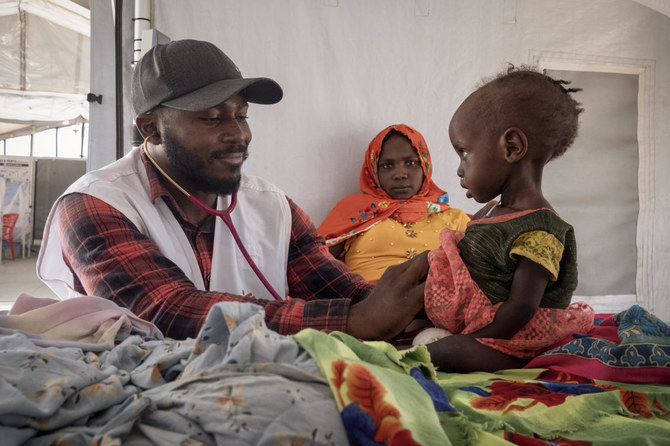
- At least 1.7 million people in Darfur were experiencing emergency levels of hunger in December
- Sudan plunged into chaos in mid-April 2023, when long-simmering tensions between the military and the paramilitary forces broke out into street battles
UNITED NATIONS: The United Nations food agency warned Sudan’s warring parties Friday that there is a serious risk of widespread starvation and death in Darfur and elsewhere in Sudan if they don’t allow humanitarian aid into the vast western region.
Leni Kinzli, the World Food Programme’s regional spokesperson, said at least 1.7 million people in Darfur were experiencing emergency levels of hunger in December, and the number “is expected to be much higher today.”
“Our calls for humanitarian access to conflict hotspots in Sudan have never been more critical,” she told a virtual UN press conference from Nairobi.
Sudan plunged into chaos in mid-April 2023, when long-simmering tensions between its military led by Gen. Abdel Fattah Burhan, and the paramilitary Rapid Support Forces commanded by Mohammed Hamdan Dagalo, broke out into street battles in the capital, Khartoum. Fighting has spread to other parts of the country, especially urban areas and the Darfur region.
The paramilitary forces, known as the RSF, have gained control of most of Darfur and are besieging El Fasher, the only capital in Darfur they don’t hold, where some 500,000 civilians had taken refuge.
Kinzli said WFP’s partners on the ground report that the situation in El Fasher is “extremely dire” and it’s difficult for civilians wanting to flee the reported RSF bombings and shelling to leave.
She said the violence in El Fasher and surrounding North Darfur is exacerbating the critical humanitarian needs in the entire Darfur region, where crop production for staple cereals like wheat, sorghum and millet is 78 percent less than the five-year average.
On top of the impact of escalating violence, Kinzli said, “WFP is concerned that hunger will increase dramatically as the lean season between harvests sets in and people run out of food.” She said a farmer in El Fasher recently told her that her family had already run out of food stocks and is living day-to-day, an indication that the “lean season,” which usually starts in May, started earlier.
Kinzli said she received photos earlier Friday from colleagues on the ground of severely malnourished children in a camp for displaced people in Central Darfur, as well as older people “who have nothing left but skin and bones.”
“Recent reports from our partners indicate that 20 children have died in recent weeks of malnutrition in that IDP camp,” she said.
“People are resorting to consuming grass and peanut shells,” Kinzli said. “And if assistance doesn’t reach them soon, we risk witnessing widespread starvation and death in Darfur and across other conflict-affected areas in Sudan.”
Kinzli called for “a concerted diplomatic effort by the international community to push the warring parties to provide access and safety guarantees” for humanitarian staff and convoys.
“One year of this devastating conflict in Sudan has created an unprecedented hunger catastrophe and threatens to ignite the world’s largest hunger crisis,” she warned. “With almost 28 million people facing food insecurity across Sudan, South Sudan and Chad, the conflict is spilling over and exacerbating the challenges that we’ve already been facing over the last year.”
In March, Sudanese authorities revoked WFP’s permission to deliver aid from neighboring Chad to West Darfur and Central Darfur from the town of Adre, saying that crossing had been used to transfer weapons to the RSF. Kinzli said restrictions from Sudanese authorities in Port Sudan are also preventing WFP from transporting aid via Adre.
Sudanese authorities approved the delivery of aid from the Chadian town of Tina to North Darfur, but Kinzli said WFP can no longer use that route for security reasons because it goes directly into besieged El Fasher.
On Thursday, gunmen in South Darfur killed two drivers for the International Committee of the Red Cross and injured three ICRC staff members. On Friday, UN humanitarian chief Martin Griffith called the killing of aid works “unconscionable.”
Kinzli said the fighting “and endless bureaucratic hurdles” have prevented WFP from delivering aid to over 700,000 people in Darfur ahead of the rainy season when many roads become impassable.
“WFP currently has 8,000 tons of food supplies ready to move in Chad, ready to transport, but is unable to do so because of these constraints,” she said.
“WFP urgently requires unrestricted access and security guarantees to deliver assistance,” she said. “And we must be able to use the Adre border crossing, and move assistance across front lines from Port Sudan in the east to Darfur so we can reach people in this desperate region.”
Hamas ‘only thing standing between the people of Gaza and a ceasefire’: Blinken

- ‘We wait to see whether, in effect, they can take yes for an answer on the ceasefire and release of hostages’
- But official says US cannot support a major military operation going into Rafah
“We wait to see whether, in effect, they can take yes for an answer on the ceasefire and release of hostages,” Blinken said late Friday.
“The reality in this moment is the only thing standing between the people of Gaza and a ceasefire is Hamas.”
Blinken pointed to difficulties in negotiating with Hamas, which the United States considers a terrorist group and does not engage with directly and which Israel has vowed to eliminate.
“The leaders of Hamas that we’re indirectly engaged with — through the Qataris, through the Egyptians — are, of course, living outside of Gaza,” Blinken said.
“The ultimate decision-makers are the folks who are actually in Gaza itself with whom none of us have direct contact.”
Blinken was addressing a dinner at the McCain Institute’s Sedona Forum in Arizona two days after meeting Israeli Prime Minister Benjamin Netanyahu and other top leaders on his latest visit to the Middle East.
Ahead of his talks with Blinken, Netanyahu vowed to push ahead with an assault on the southern Gaza city of Rafah to root out Hamas regardless of the outcome of negotiations for a temporary ceasefire that would involve the release of hostages.
President Joe Biden’s administration has repeatedly warned Netanyahu’s government against moving on Rafah, where some 1.4 million Palestinians have taken shelter after fleeing the Israeli assault in response to the October 7 attack by Hamas.
Blinken said that Israel, which counts on the United States for military and diplomatic support, has yet to present “a credible plan to genuinely protect the civilians who are in harm’s way” in Rafah.
“Absent such a plan, we can’t support a major military operation going into Rafah because the damage it would do is beyond what’s acceptable,” Blinken said.
France condemns attack on Red Cross in Sudan
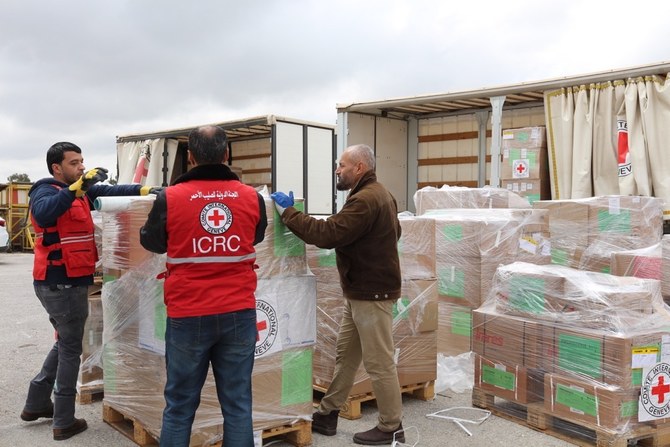
PARIS: France on Friday condemned “in the strongest terms” an attack on an International Committee of the Red Cross convoy in war-torn Sudan that killed two staff and injured three others.
“France calls on all parties to the conflict to respect their obligations under international humanitarian law, which obliges them to protect humanitarian and health staff and guarantee complete, safe and unhindered humanitarian access,” said French foreign ministry spokesman Christophe Lemoine.
The ICRC said gunmen killed two drivers and injured three staff in South Darfur on Thursday as they returned from a humanitarian mission.
A brutal conflict between the Sudanese army led by General Abdel Fattah Al-Burhan and the paramilitary Rapid Support Forces of his ex-deputy Mohamed Hamdan Dagalo has torn the country apart for more than a year.
The war has killed tens of thousands of people and forced millions more to flee their homes in what the United Nations has called the “largest displacement crisis in the world.”
It has also triggered acute food shortages and a humanitarian crisis that has left the northeast African country’s people at risk of starvation.
UN official warns that famine in northern Gaza is already ‘full-blown’

- Israel has killed more than 34,000 Palestinians, according to Gaza’s Health Ministry
- The panel that serves as the internationally recognized monitor for food crises said earlier this year that northern Gaza was on the brink of famine and likely to experience it this month
WASHINGTON: A top UN official said Friday that hard-hit northern Gaza was now in “full-blown famine” after more than six months of war between Israel and Hamas and severe Israeli restrictions on food deliveries to the Palestinian territory.
Cindy McCain, the American director of the UN World Food Program, became the most prominent international official so far to declare that trapped civilians in the most cut-off part of Gaza had gone over the brink into famine.
“It’s horror,” McCain told NBC’s “Meet the Press” in an interview to air Sunday. “There is famine — full-blown famine — in the north, and it’s moving its way south.”

She said a ceasefire and a greatly increased flow of aid through land and sea routes was essential to confronting the growing humanitarian catastrophe in Gaza, home to 2.3 million people.
There was no immediate comment from Israel, which controls entrance into Gaza and says it is beginning to allow in more food and other humanitarian aid through land crossings.
The panel that serves as the internationally recognized monitor for food crises said earlier this year that northern Gaza was on the brink of famine and likely to experience it this month. The next update will not come before this summer.
One of the US Agency for International Development’s humanitarian officials in Gaza told The Associated Press that on-the-ground preparations for a new US-led sea route were on track to bring in more food — including treatment for hundreds of thousands of starving children — by early or mid-May. That’s when the American military expects to finish building a floating pier to receive the shipments.
Ramping up the delivery of aid on the planned US-backed sea route will be gradual as aid groups test the distribution and security arrangements for relief workers, the USAID official said.
The official spoke on condition of anonymity over security concerns for work done in a conflict zone. They were some of the agency’s first comments on the status of preparations for the Biden administration’s $320 million Gaza pier project, for which USAID is helping coordinate on-the-ground security and distribution.
At a factory in rural Georgia on Friday, USAID Administrator Samantha Power pointed to the food crises in Gaza and other parts of the world as she announced a $200 million investment aimed at increasing production of emergency nutritional paste for starving children under 5.
Power spoke to factory workers, peanut farmers and local dignitaries sitting among pallets of the paste at the Mana nonprofit in Fitzgerald. It is one of two factories in the US that produces the nutritional food, which is used in clinical settings and made from ground peanuts, powdered milk, sugar and oil, ready to eat in plastic pouches resembling large ketchup packets.
“This effort, this vision meets the moment,” Power said. “And it could not be more timely, more necessary or more important.”
Under pressure from the US and others, Israeli officials in recent weeks have begun slowly reopening some border crossings for relief shipments.
But aid coming through the sea route, once it’s operational, still will serve only a fraction — half a million people — of those who need help in Gaza. Aid organizations including USAID stress that getting more aid through border crossings is essential to staving off famine.
Children under 5 are among the first to die when wars, droughts or other disasters curtail food. Hospital officials in northern Gaza reported the first deaths from hunger in early March and said most of the dead were children.
Power said the UN has called for 400 metric tons of the nutritional paste “in light of the severe hunger that is pervading across Gaza right now, and the severe, acute humanitarian crisis.” USAID expects to provide a quarter of that, she said.
Globally, she said at the Georgia factory, the treatment made there “will save untold lives, millions of lives.”
USAID is coordinating with the World Food Program and other humanitarian partners and governments on security and distribution for the pier project, while US military forces finish building it. President Joe Biden, under pressure to do more to ease the humanitarian catastrophe in Gaza as the US provides military support for Israel, announced the project in early March.
US Central Command said in a statement Friday that offshore assembly of the floating pier has been temporarily paused due to high winds and sea swells, which caused unsafe conditions for soldiers. The partially built pier and the military vessels involved have gone to Israel’s Port of Ashdod, where the work will continue.
A US official said the high seas will delay the installation for several days, possibly until later next week. The official, who spoke on condition of anonymity to discuss operation details, said the pause could last longer if the bad weather continues because military personnel and divers have to get into the water for the final installation.
The struggles this week with the first aid delivery through a newly reopened land corridor into north Gaza underscored the uncertainty about security and the danger still facing relief workers. Israeli settlers blocked the convoy before it crossed Wednesday. Once inside Gaza, the convoy was commandeered by Hamas militants, before UN officials reclaimed it.
In Gaza, the nutritional treatment for starving children is most urgently needed in the northern part of the Palestinian territory. Civilians have been cut off from most aid supplies, bombarded by Israeli airstrikes and driven into hiding by fighting.
Acute malnutrition rates there among children under 5 have surged from 1 percent before the war to 30 percent five months later, the USAID official said. The official called it the fastest such climb in hunger in recent history, more than in grave conflicts and food shortages in Somalia or South Sudan.
One of the few medical facilities still operating in northern Gaza, Kamal Adwan hospital, is besieged by parents bringing in thousands of children with malnutrition for treatment, the official said. Aid officials believe many more starving children remain unseen and in need, with families unable to bring them through fighting and checkpoints for care.
Saving the gravely malnourished children in particular requires both greatly increased deliveries of aid and sustained calm in fighting, the official said, so that aid workers can set up treatment facilities around the territory and families can safely bring children in for the sustained treatment needed.





